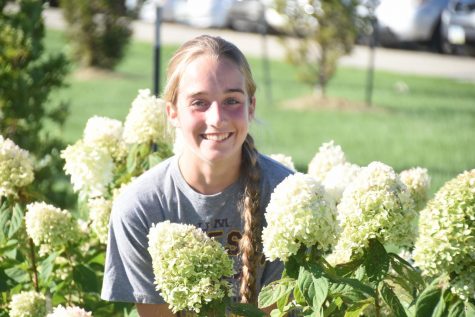Prairie in Progress
An unused plot of land becomes a colorful recreational area.
September 17, 2019
The new high school is not entirely surrounded by endless fields of corn; a secluded plot of land surrounds the southwest and northwest corners. Two years before the high school was built, the science department discovered the undeveloped land included in the school property. Science teachers Sarah Howe, Lisa Horsch, and Kayla Burns immediately sought to transform the small patch of land into a prairie restoration site. The unused, isolated weed-infested area will become a source of community.
A winding mowed path will connect the preexisting cross country course to a new picnic shelter. The course stretches along the north side of the school in a one mile loop that cuts straight through the budding prairie. On the winding path students can actually walk into the prairie rather than skirting around the edges. The picnic shelter destination encourages elementary school field trips and lessons. Students will also be able to use kayaks housed in a painted boat storage area. The painted storage area features many original works created by students.
The restoration project itself relies upon student involvement. “I think it’s really important to get students outside,” Burns said. “You can’t learn about it unless you interact with it. I think that having a place to go where students can actually see things that they are learning about vs. just reading or watching videos is important.”
As prairie restoration builds involvement, it will also develop the ecosystem. “The prairie seed is a pollinator seed mix, made up of milkweed and coneflower that will attract insects and other creatures,” Burns said.
The prairie plot is currently overrun by weeds that choke out surrounding life. These weeds will be decimated by chemical spray to make room for the flowering plants that will coexist more peacefully.
The soil is already suited to prairie plants, but is especially vulnerable to erosion because of the nearby pond. The pollinator seed mix creates extensive roots that will prevent soil erosion and help filter the pond.
Before the ecosystem can develop, the pollinator mix must have time to grow. Within two years, the pollinator mix will be fully established. “We’ll have to see what comes up,” Burns said.





